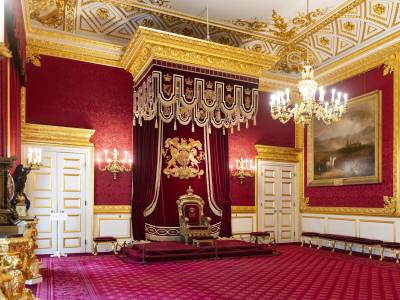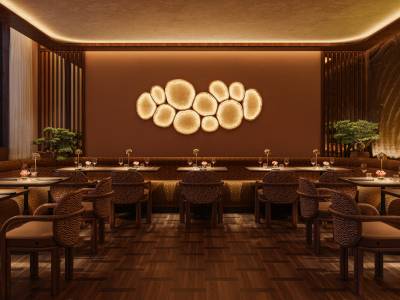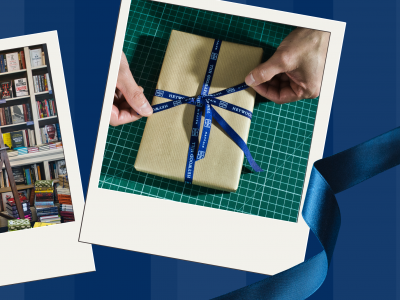When tickets for guided tours of St James’s Palace went on sale in February this year, they sold out in hours. For those lucky enough to snag a spot on the tours, which began in April, they have purchased a rare opportunity to see inside London’s oldest royal residence. Surely worth the £85 price tag? Nestled in the heart of the West End, unlike its stately counterpart half a mile away, St James’s Palace’s red-brick façade does not attract swarms of tourists in the same way as Buckingham Palace, and yet its history is just as rich and certainly stretches back further by several centuries. It was at St James’s Palace that Mary I signed the treaty surrendering Calais in 1558, and also from where Elizabeth I set out to address her troops assembled at Tilbury ready to confront the Spanish Armada in 1588.
Inside St James’s Palace: An Exclusive Tour of Royal History
13th August 2025
With a limited number of visitors able to tour St James's Palace—London’s oldest royal residence—this year, Lucinda Gosling looks back over 500 years of colourful history. As featured in The Illustrated Royalty in Britain.
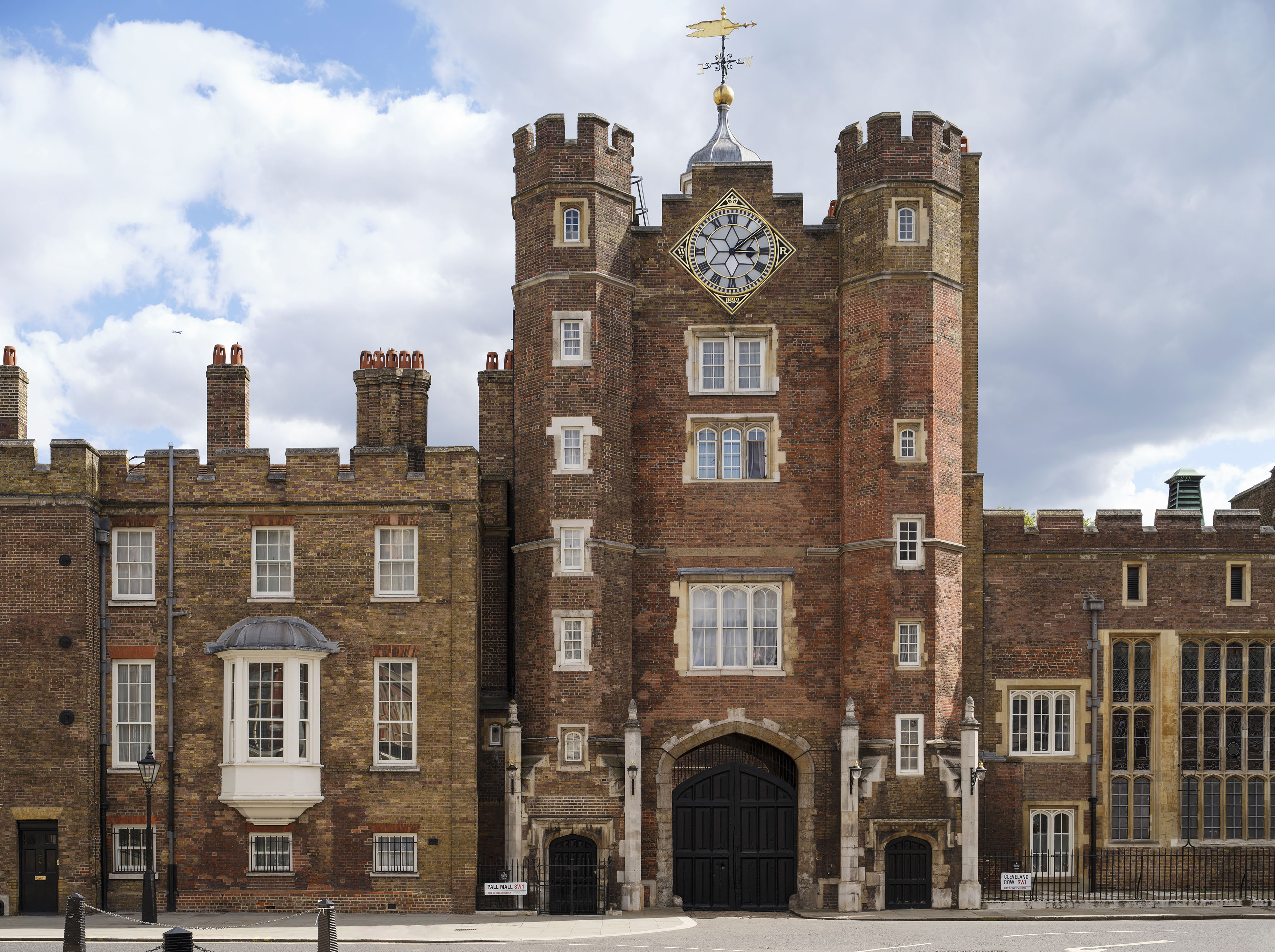
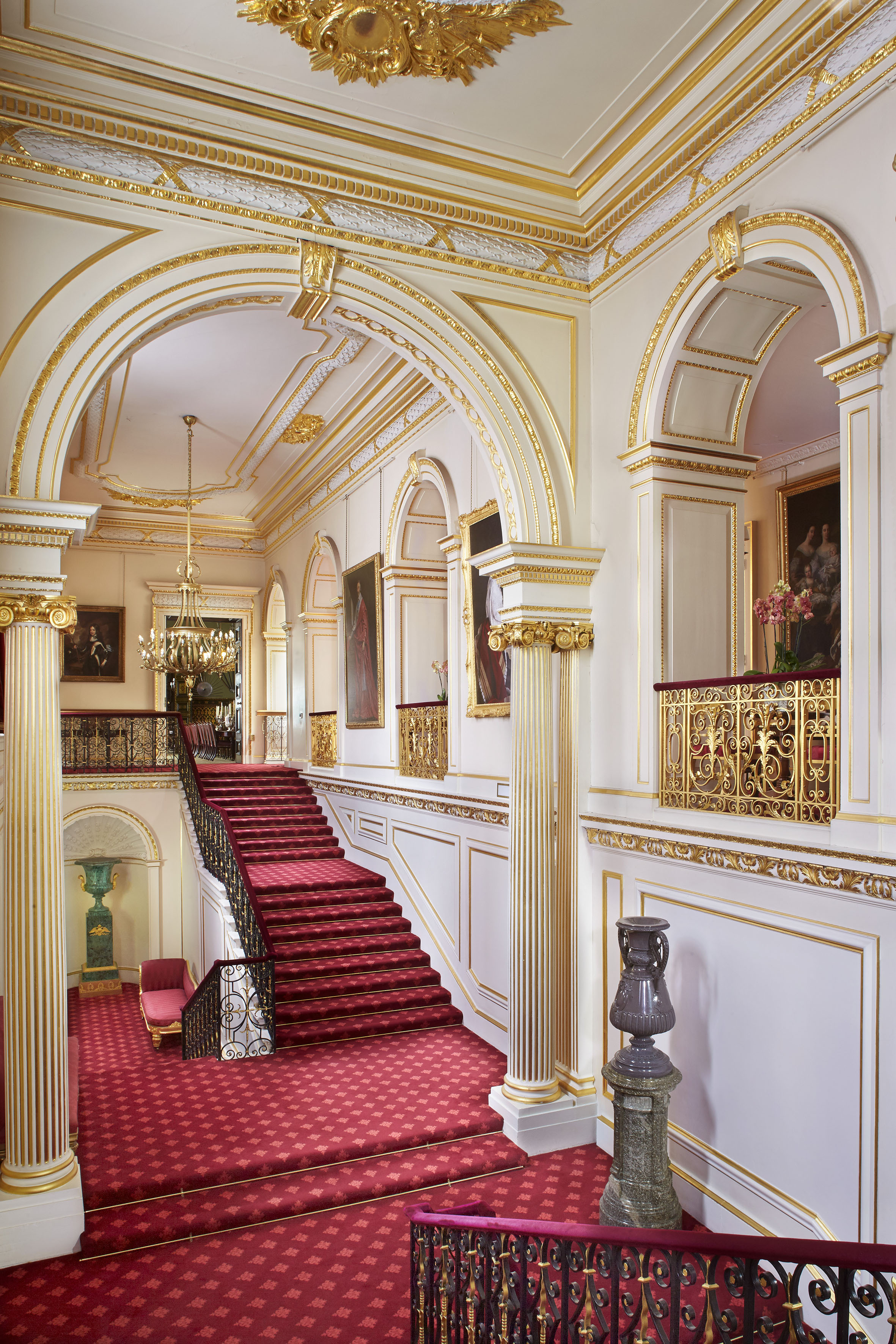
More recently, on 10 September 2022, the Accession Council of His Majesty The King was held in the Picture Gallery followed by The King’s first Privy Council meeting in the Throne Room, where the throne, dating back to the reign of George IV, represents the principal seat of monarchy in the United Kingdom. Until 1689, Whitehall was the principal royal residence, but after its destruction by fire, the monarch moved to St James’s Palace and stayed for the next 150 years. William IV was the last to live there; when Queen Victoria came to the throne in 1837, she decided she preferred Buckingham Palace.
Sandwiched between The Mall and St James’s Street, the palace lent its name to the area and shaped its character. Ambitious young men who wished to keep up appearances while at court, gave their custom to the smart tailors and barbers that began to establish businesses nearby, some of which remain to this day. These courtiers met and debated at coffee houses and gentlemen’s clubs, furnished their homes with the help of art dealers, and bought tea and condiments from the grocer, Fortnum and Mason.
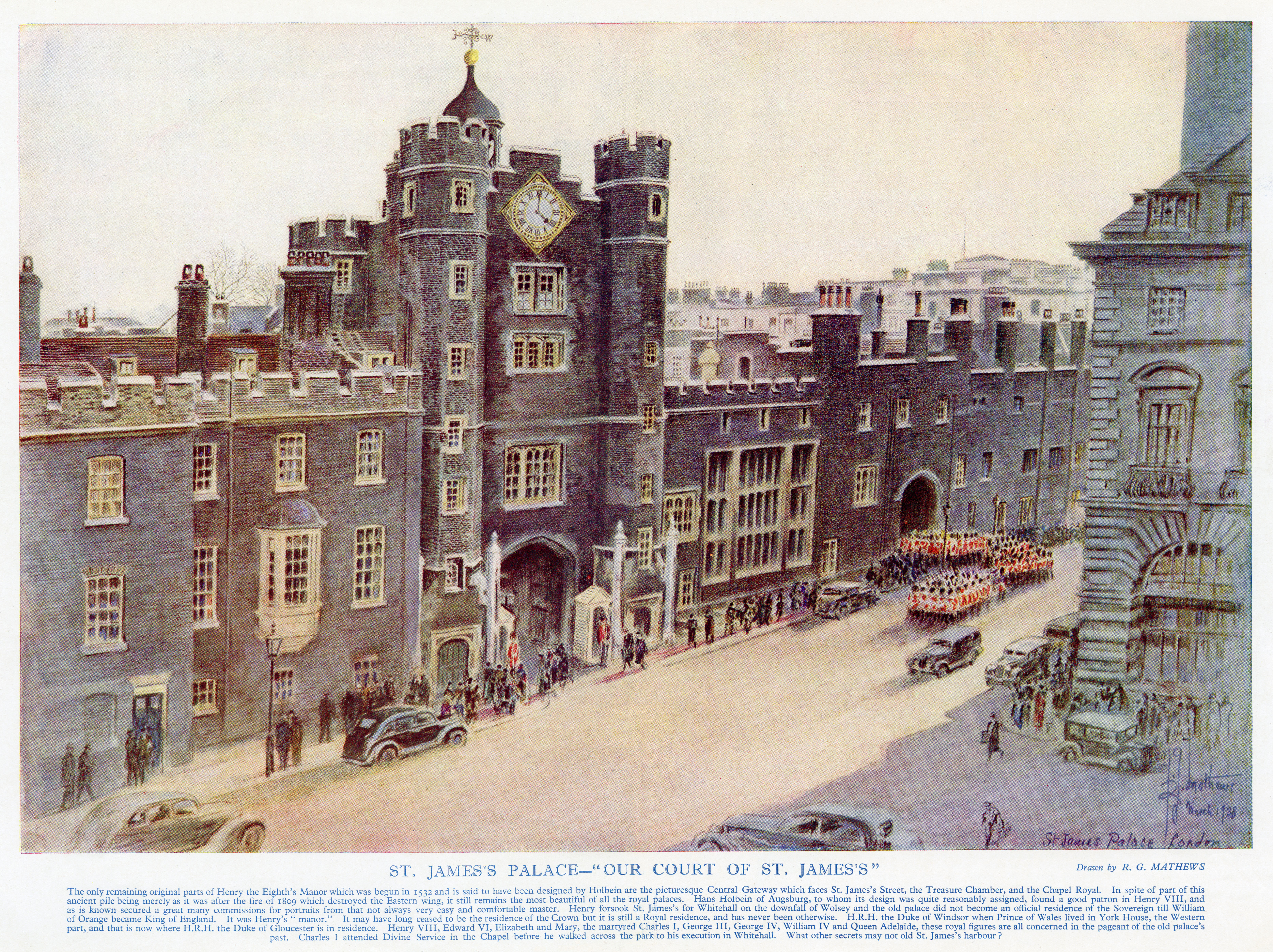
It is difficult to imagine the area in the 12th century, when green meadows and fresh air meant it was selected as the site of a hospital for women with leprosy, safely some distance away from the grime, disease and noise of the City in the east. In the 1530s, Henry Room, where both the Duke’s mother, Princess Alice of Battenberg, and his grandmother, Princess Victoria of Hesse, were born. The room, originally known as, ‘the Consort’s Presence Chamber’ is named after the display of tapestries telling the story of Vulcan and Venus from Homer’s Odyssey, part of a suite of nine tapestries commissioned by Charles I (when Prince of Wales) from the Mortlake tapestry workshop. Surviving stencils by William Morris from 1866 can also be seen in this room.
St James’s Palace is a working palace. In particular, it is the engine room and setting for the monarch’s diplomatic role. Ambassadors from around the world are formerly accredited to the Court of St James’s, and it was where, up until 1939, aristocrats, high-ranking officials, politicians, military personnel and members of the diplomatic corps (exclusively men) would attend court levees. With participants wearing ceremonial uniform, decorations and knee breeches, this tradition derived from the sovereign once allowing courtiers the privilege of watching them rise from bed and get dressed.
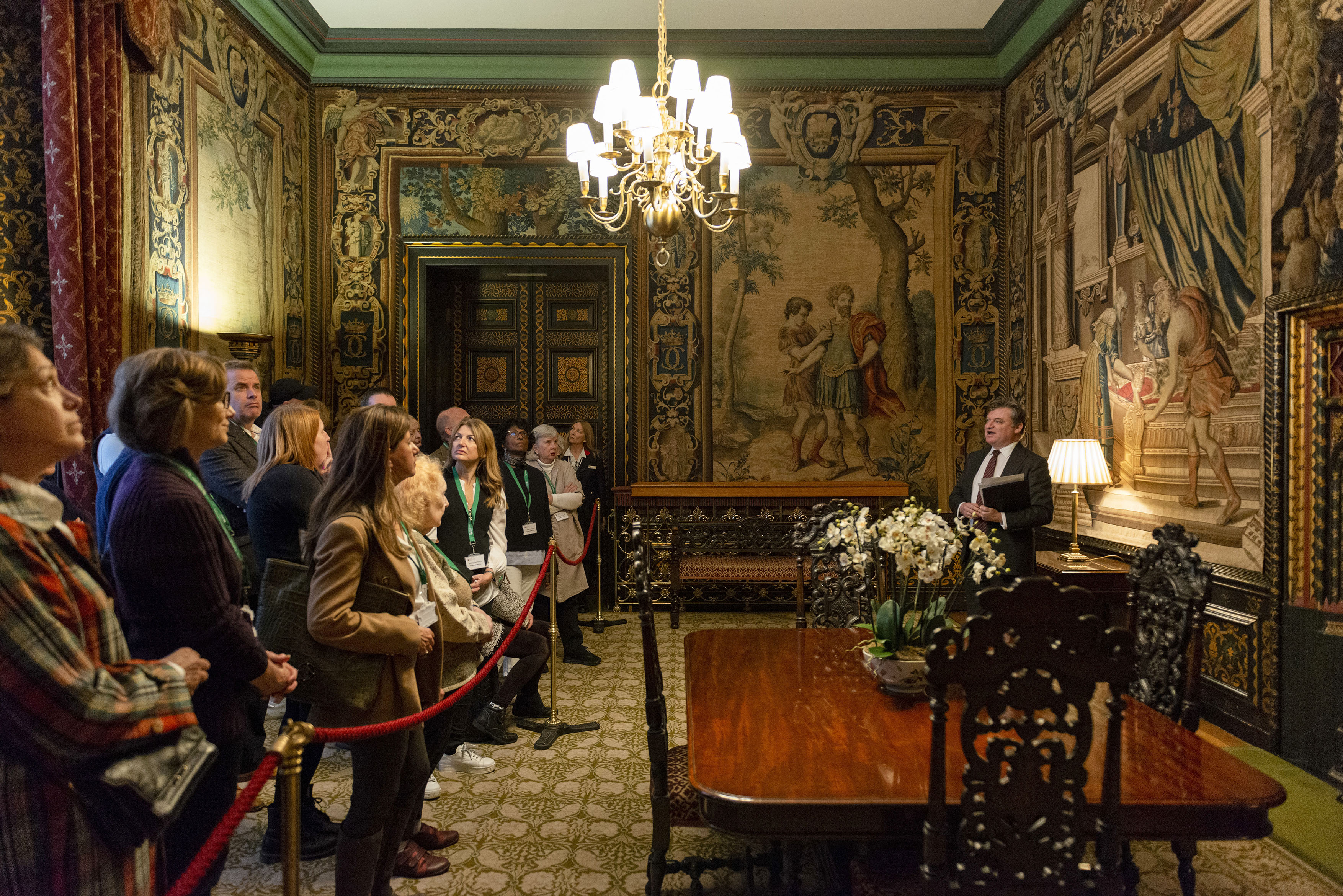
Queen Victoria’s court drawing rooms were often held at St James’s Palace (earlier in her life, she celebrated her 14th birthday there with a ball where she, “danced in all eight quadrilles”). Those wishing to be presented to the monarch would apply to the Lord Chamberlain’s office at St James’s. It has also hosted historical conferences, including the second Indian Round Table Conference in September 1931, and the Inter-Allied Conference, held on 12 June 1941 and resulting in the Declaration of St James’s Palace; a statement of the shared aims and principles of the allied powers. Today, the palace is the venue for diplomatic receptions for ambassadors, high commissioners, senior diplomats and their spouses, where about 1,000 people at a time will make their way through the state apartments, sustained by a substantial buffet.
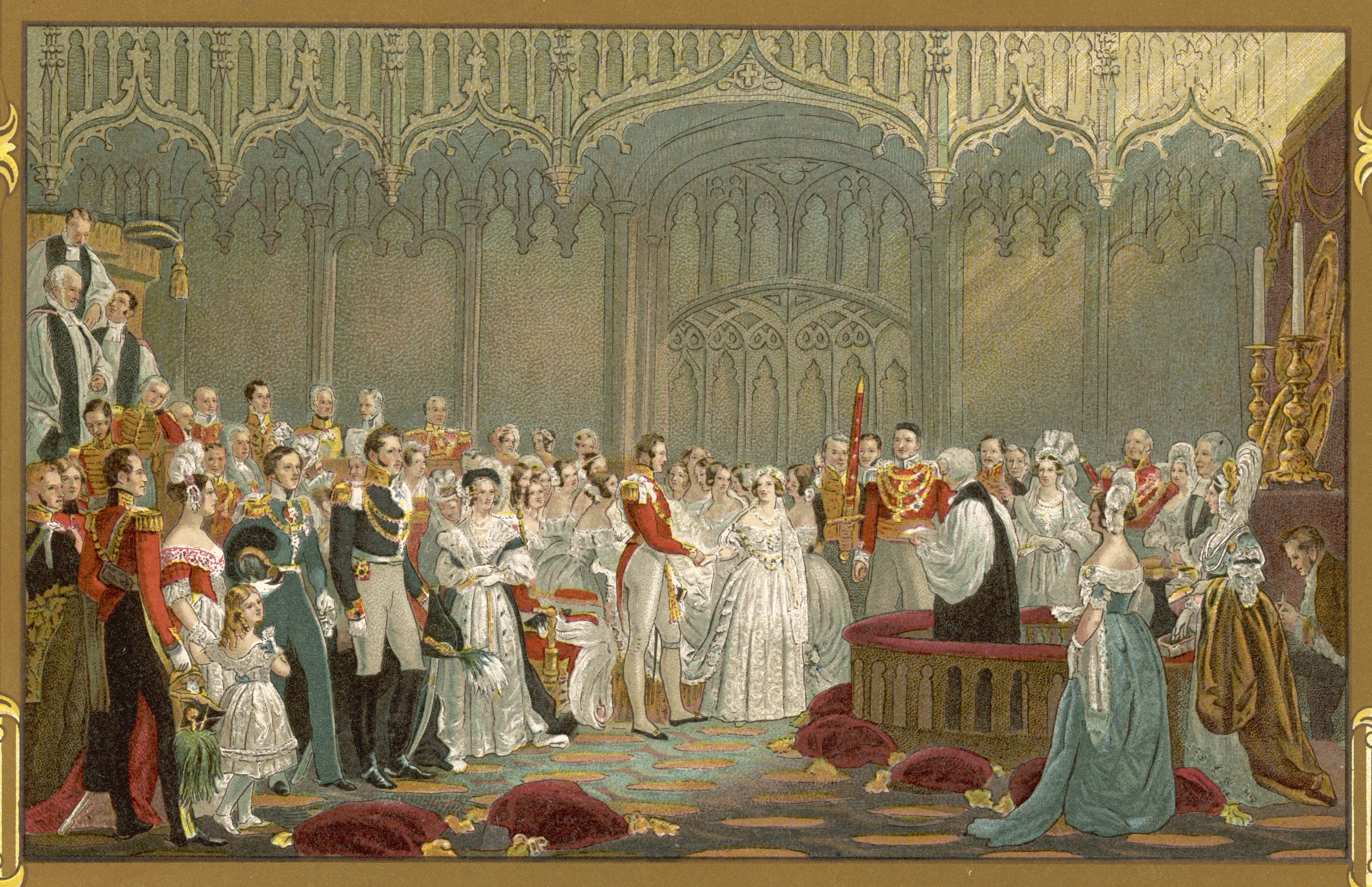
St James’s Palace is also used for receptions for charities supported by members of the Royal Family or for entertaining during incoming state visits. In 1961, a fashion show by the Incorporated Society of London Fashion Designers was held in three of the crimson state rooms, raising funds for the Edwina Mountbatten Trust. Attended by the Duchess of Kent, among the guests was the Hon. Mrs Sonia Cubitt, grandmother of Her Majesty Queen Camilla.
Perhaps most symbolic to the public is Friary Court, still partly Tudor in origin where, above four yellow-bricked arches, is the Proclamation Gallery from where a new monarch is first proclaimed by Garter King of Arms, and later, the date of the coronation is announced. Friary Court is one of four courts within the palace. Those on a tour of the palace will have passed through the Colour Court, so-called because it was once where the Changing the Guard ceremony took place. The base for a flagpole, which held the flag or ‘colour’ can still be seen in the centre of the courtyard.
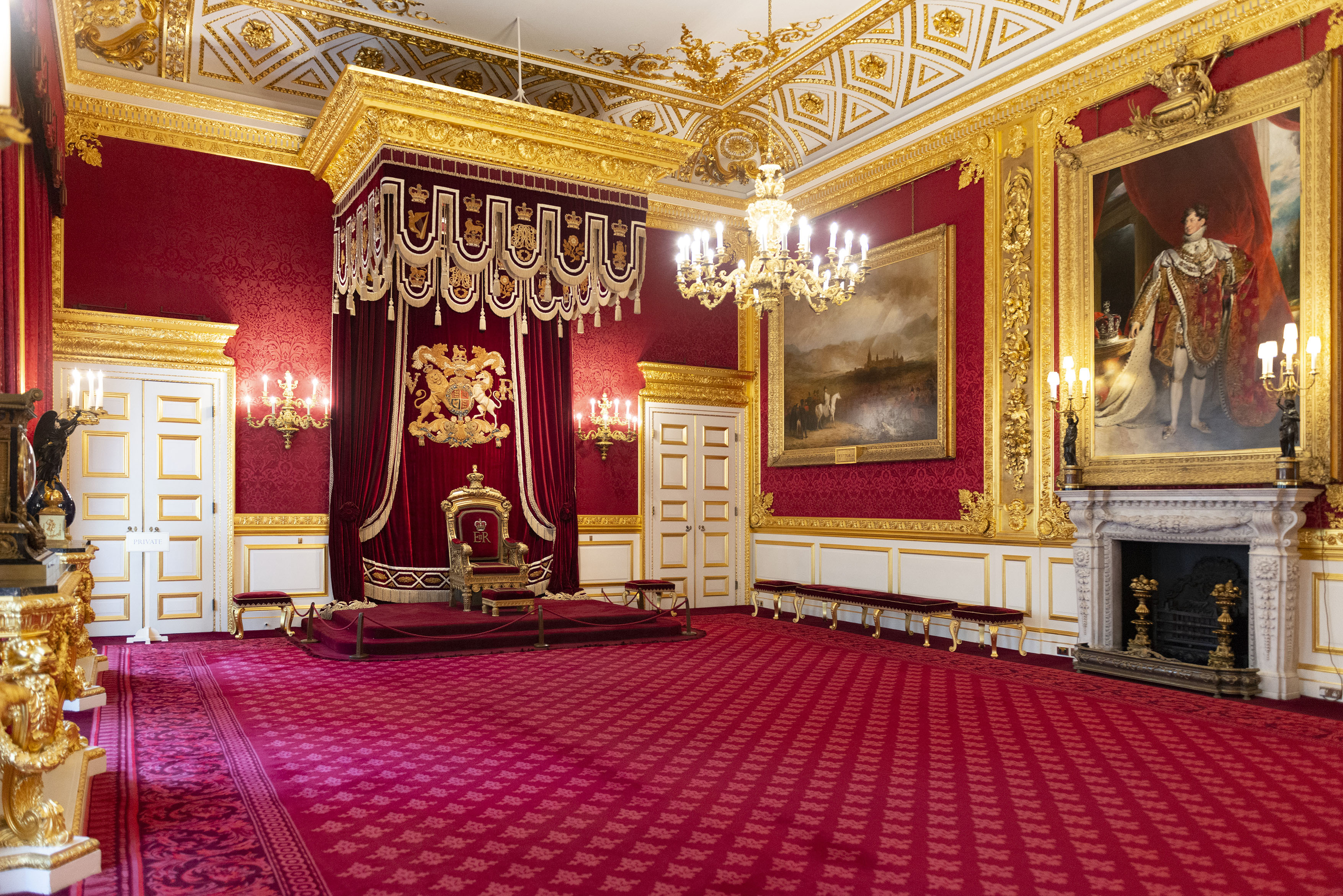
Beyond the formality and special functions, the palace has also served as a home to various Royal Family members over the years. Today, The Princess Royal has an apartment which she uses as her London base, and Princess Alexandra, The Honourable Lady Ogilvy, also has an apartment at St James’s Palace. Before moving to Clarence House in 2003, The King, when Prince of Wales and separated from The Princess of Wales, lived here with Prince William and Prince Harry, specifically in York House, which constitutes the western end of the palace.
The future Edward VIII, who also lived in York House before occupying Fort Belvedere on the Windsor estate, considered it “a rambling, antiquated structure, a veritable rabbit warren, with hallways interrupted by unexpected flights of steps leading to unsymmetrical rooms full of ugly Victorian furniture, brass beds and discarded portraits of former monarchs”. It was, at least, conveniently close to his favourite haunt, the Embassy Club, on Old Bond Street.
The Picture Gallery
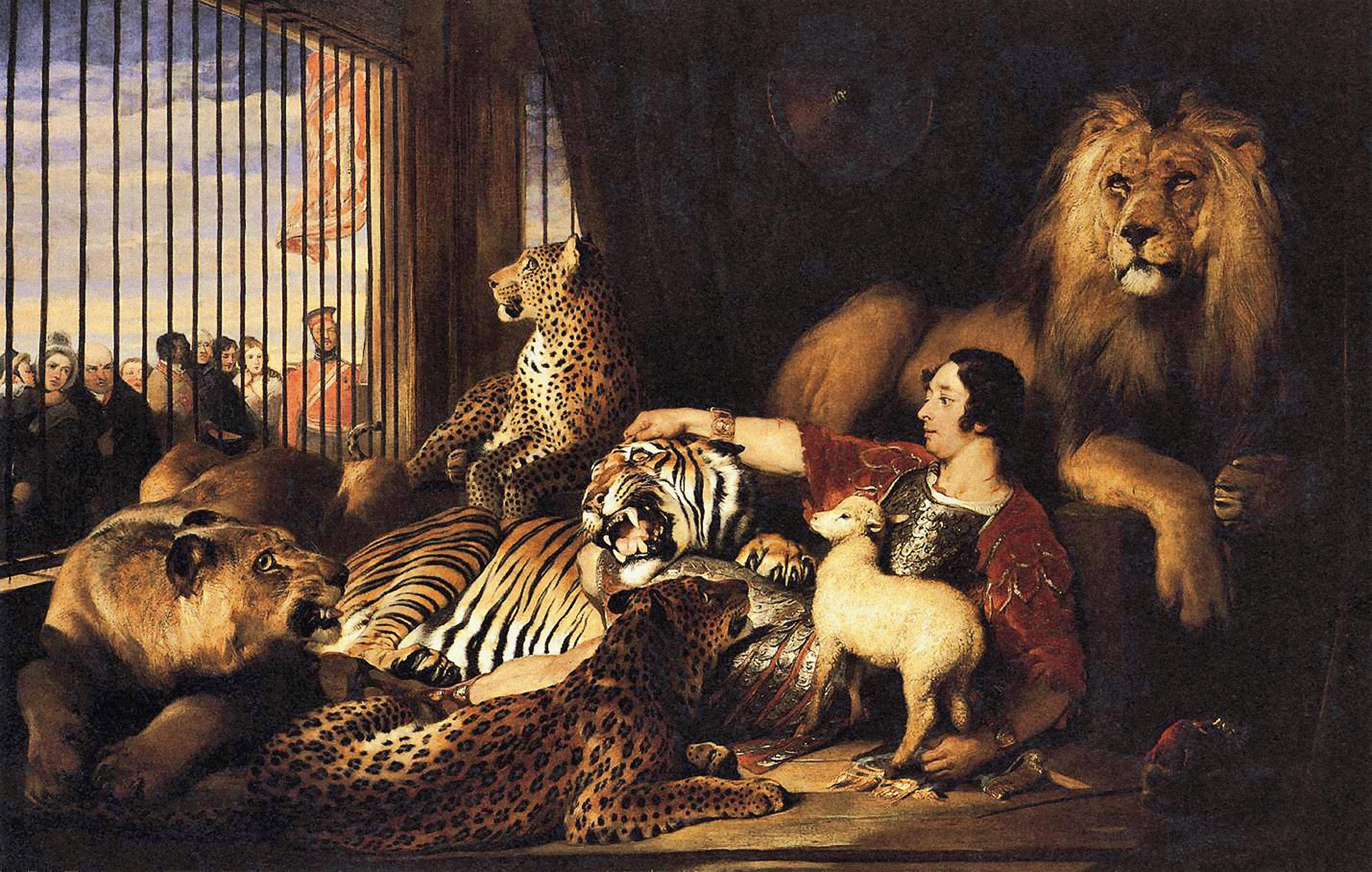
Visitors to the palace will pass through the Picture Gallery and will no doubt be directed to Sir Edwin Landseer’s painting, ‘Isaac van Amburgh and his Animals’. Amburgh, an American lion tamer, performed in London for six weeks in 1839 and was a sensation, with Queen Victoria seeing his show seven times in total. She commissioned Landseer to paint Amburgh, surrounded by his beasts, the first of 40 works Landseer would paint for Victoria and Albert, including many of their dogs (see the feature here).
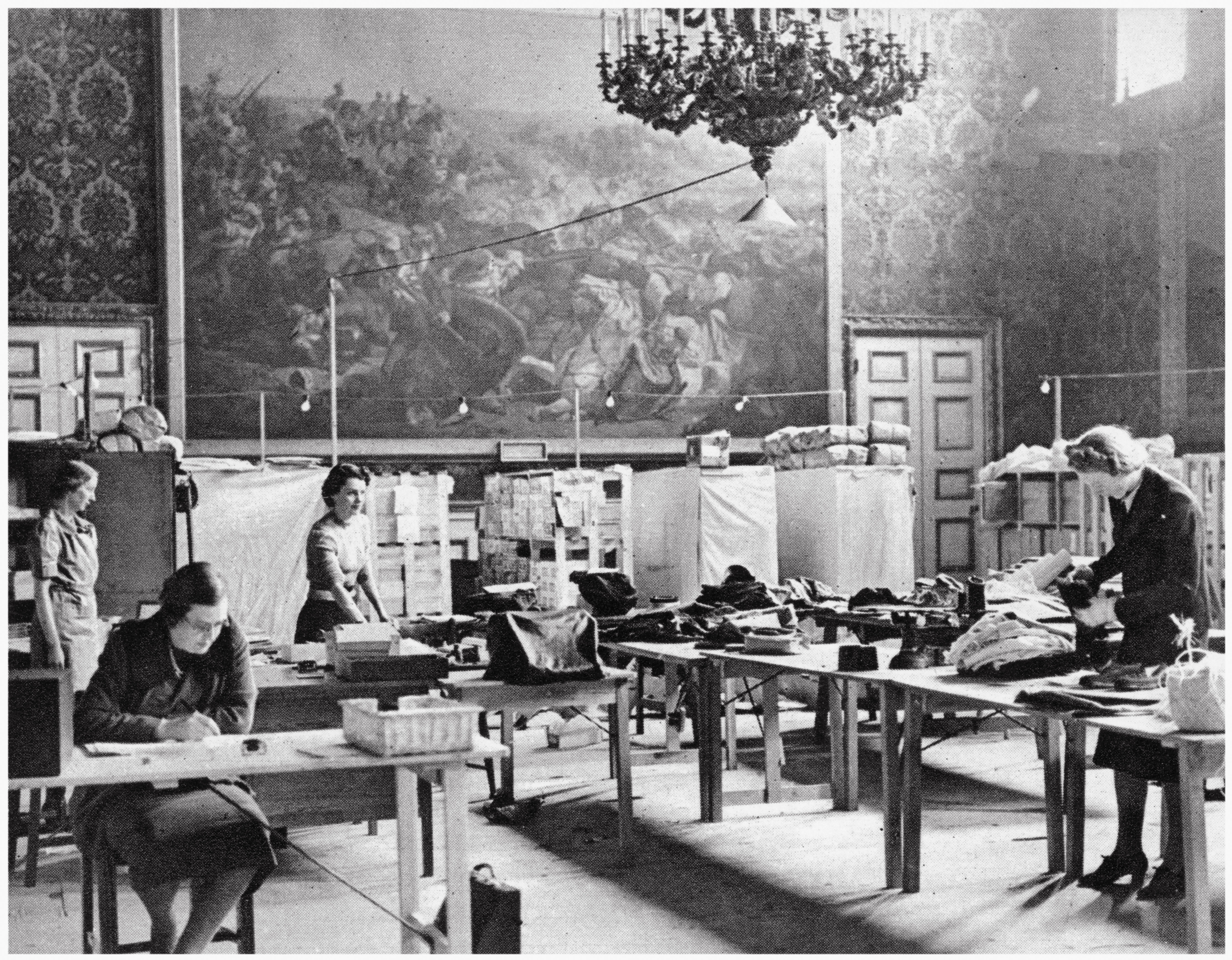
The Palace at War
During the Second World War, St James’s Palace was transformed into a depot for the Red Cross, acting as a central hub for parcels sent overseas to prisoners of war. The Picture Gallery became the packing department (overseen by Holbein’s portrait of Henry VIII), Thomas Lawrence’s painting of George IV looked over the female clerks working at makeshift desks in the Throne Room, while Charles II surveyed the workers’ bicycles piled up around the Grand Staircase.
In 1994, when The Prince of Wales was away skiing in Klosters, his York House apartment was broken in to, apparently by a passing opportunistic thief – an Italian called Renato Rinino – who four years later admitted to breaking and entering. A more dramatic crime took place in 1810, though the true identity of the perpetrator remains uncertain. In the early hours of 31 May, Joseph Sellis, valet to Ernest Augustus, Duke of Cumberland (younger brother of George IV and William IV) was found dead with his throat cut in his room in York House.
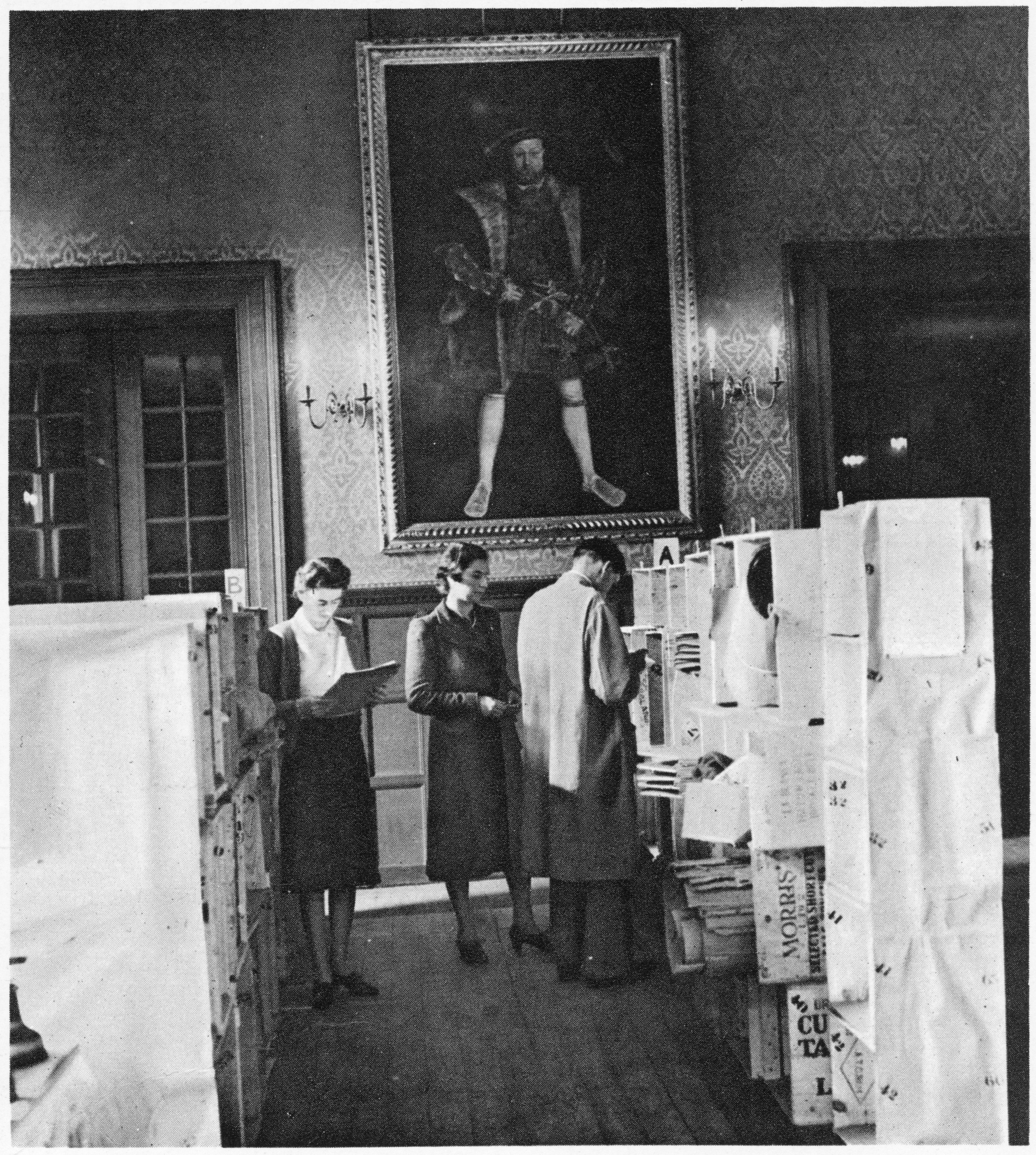
His master, with a visible blow to the head, claimed the servant had viciously attacked him in his bed and, after he had been chased away, committed suicide in his own bedroom. Cumberland’s version of events was accepted at the inquest, but substantial contradictory evidence and the duke’s unpopularity meant he was never exonerated in the eyes of the public. Many thought he had committed murder because Sellis knew too much scandalous detail about the duke’s private life. In a building close to its 500th birthday, it would be unusual if St James’s Palace did not to have one or two intriguing tales to tell.
For anyone hoping to discover the secrets of the senior royal palace for themselves this year, it would be advisable to sign up for email updates, to be the first to hear when St James's Palace Tour tickets go on sale.
